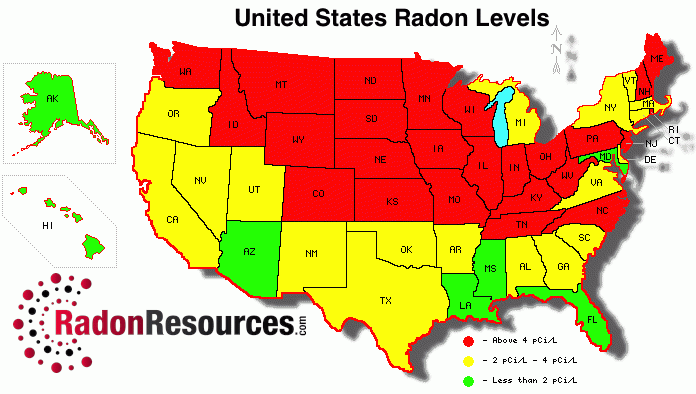Kentucky is known as the “triple crown of lung cancer,” for more than just a single reason. It has the country’s highest rates in terms of smoking, and it also has the highest rates of secondhand smoke exposure as well as radon exposure. It’s no secret that smoking and radon exposure work hand-in-hand when it comes to lung cancer. If you are exposed to tobacco smoke in any form – direct or secondhand – and you’re also exposed to elevated levels of radon than the risk of contracting lung cancer rises exponentially.
The thing is, it doesn’t matter where you’re located there’s still a risk you may have elevated levels of radon in your residence or business. Just because your neighbor’s home tested safe doesn’t mean yours will and vice versa. That’s why it’s recommended that you test your residence at least twice a year.
All that aside, there are areas of the country that are more susceptible to radon. Because the deadly gas can seep up from the soil, there are areas where its more abundant – like Kentucky. It begs the question: what areas of the country are at a higher risk for radon?
High Risk States for Radon
Kentucky isn’t the only high risk state when it comes to elevated levels of radon, there are quite a few others. Before we begin, it’s important to note that even if your state is not listed here you should still have your home tested regularly. It doesn’t matter whether you are in a high risk state or not, radon still can – and does – exist.
- Colorado
- Connecticut
- Idaho
- Illinois
- Indiana
- Iowa
- Kansas
- Kentucky
- Maine
- Michigan
- Minnesota
- Montana
- Nebraska
- Nevada
- New Mexico
- New York
- North Dakota
- Ohio
- Pennsylvania
- South Dakota
- Tennessee
- Utah
- Virginia
- Washington
- West Virginia
- Wisconsin
- Wyoming
For reference, the states listed here were identified thanks to the high risk map from the US Environmental Protection Agency. Some of the states listed only have a small portion in a high risk area, but it matters little. As we mentioned above, even the states not on this list are not 100% safe from radon.
Test Your Home
Many underestimate the true dangers of radon, dismissing the deadly gas as a hoax or a ploy. In reality, radon exposure is linked to as many as 22,000 lung cancer deaths every year. Worse yet, lung cancer has the highest mortality rate of all types of cancer – most of the time if you are diagnosed you are in big trouble.
The only way to detect elevated levels of radon in a residence or business is to test for it. The gas is odorless, tasteless and colorless. It is completely undetectable to us without the proper equipment. You can, of course, purchase radon detectors that will constantly monitor the presence of the gas in your home.
It’s better to discover there is no problem in your home, than to discover there is one and wonder how long you and your family have been exposed. There are no symptoms for short term exposure either, so effects will only show later in life.
Get your home tested for radon, whether you are in an area with a higher risk for radon or not.



